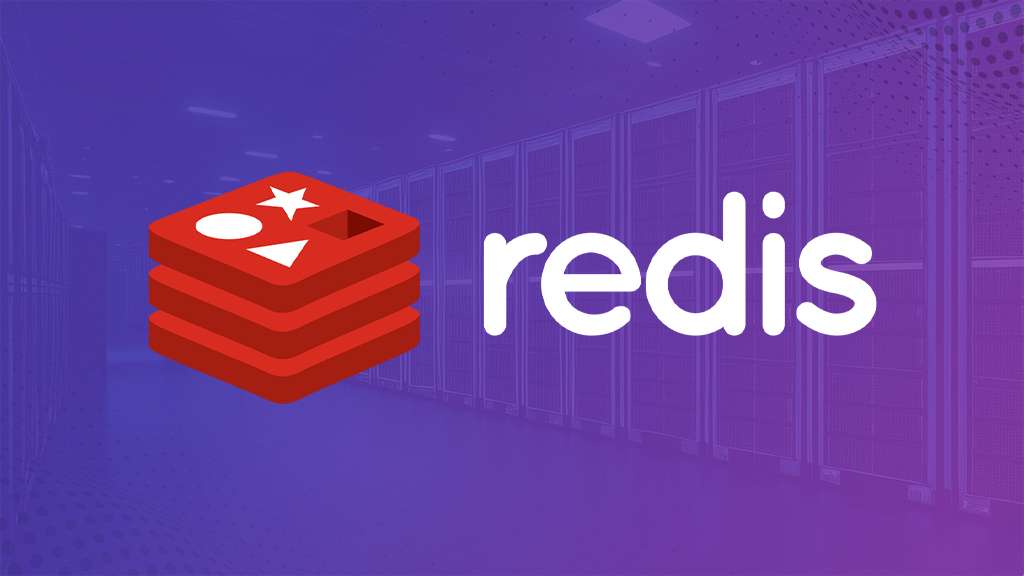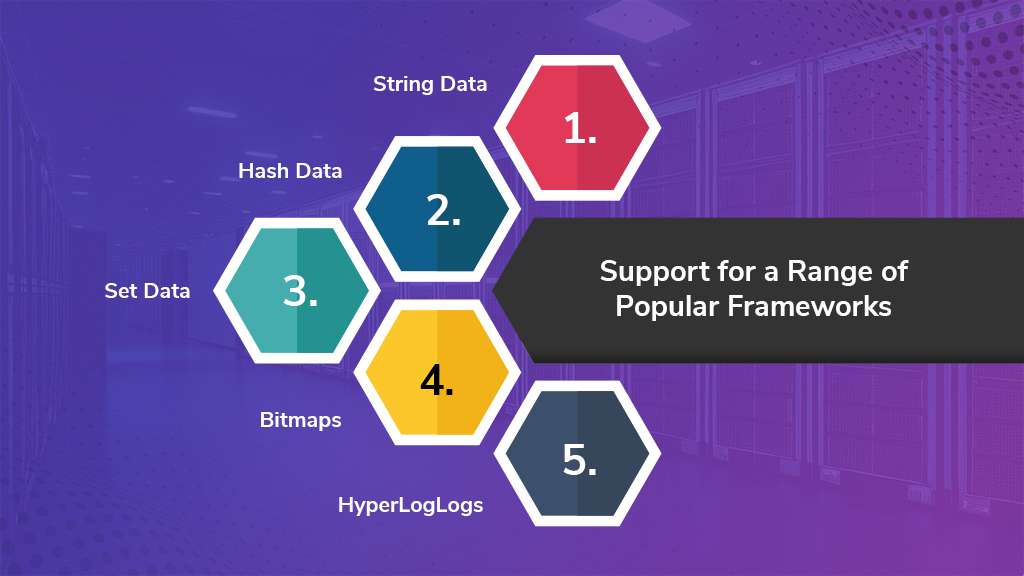
Is your website running slow? Are visitors leaving before your pages even load? Say goodbye to frustration and slow loading times. Redis caching is here to save the day.
Redis keeps a readily available copy on hand like a personal assistant serving up your favorite dishes before you even ask. This means lightning-fast page loads, immediate responses, and happier visitors who stay longer and engage more.
In this blog, we’ll explain the magic of Redis caching, discuss its benefits, and walk you through the steps to implement it on your website. So get ready to say goodbye to lag and unlock the ultimate speed boost for your online presence!
What does Redis stand for?
Redis, an abbreviation for Remote Dictionary Server, is an in-memory, persistent, key-value data structure server that has gained prominence in the realm of web application development. Unlike traditional relational databases, Redis excels in storing and manipulating high-level data types, including lists, maps, sets, and sorted sets. This capability, coupled with its in-memory architecture, enables Redis to deliver exceptional performance, making it an ideal choice for caching mechanisms in WordPress applications.
When integrated with MySQL or MariaDB, the prevalent relational databases utilized by WordPress, Redis’s caching mechanism significantly accelerates database query processing. By storing frequently accessed data in its memory-resident data structure, Redis eliminates the need for repeated database queries, reducing server load and improving overall application performance.
Moreover, Redis’s simplicity and micro-data structure manipulation capabilities further enhance its performance advantages over traditional relational databases. Its lightweight and efficient design minimizes resource consumption, while its specialized data structures enable rapid data retrieval and manipulation. As a result, Redis has emerged as a preferred caching solution for WordPress installations, offering substantial performance gains and a smoother user experience.
Redis Caching’s Most Popular Supported Frameworks:

Redis boasts support for a range of popular frameworks, including:
1. String Data Structures
Redis Caching facilitates various string-based data structures, encompassing strings, string lists, and string sets. These structures prove highly efficient for the storage and retrieval of straightforward text data.
2. Hash Data Structures
To establish mappings between keys and values, Redis furnishes hash data structures. These structures are particularly well-suited for storing intricate data objects and ensuring the swift retrieval of associated values.
3. Set Data Structures
Redis provides set data structures, constituting unordered collections of unique elements. These structures prove instrumental in the efficient storage and manipulation of datasets.
4. Bitmaps
Specialized data structures for executing operations on substantial binary data, Redis supports bitmaps. This feature is especially beneficial for applications demanding the efficient handling of extensive binary datasets.
5. HyperLogLogs
Redis incorporates HyperLogLogs, which function as probabilistic data structures for estimating unique elements within a data stream. This proves invaluable for applications necessitating real-time estimates of unique visitors or items.
The Necessity of Redis Integration for WordPress
A WordPress website plagued by front-end and back-end delays can significantly hinder user experience, potentially leading to lost conversions and decreased site engagement. To address this challenge and optimize website performance, integrating a caching mechanism like Redis cache proves to be an effective solution.
By enabling Redis Caching on a WordPress site, visitors can indeed experience faster content delivery. This is achieved by Redis’s ability to store crucial data in its memory, making it readily accessible for retrieval upon request. This in-memory storage eliminates the need for time-consuming database queries, such as those typically performed in MySQL, whenever a visitor requests data.
1. Optimizing User Experience
- Laggy front and back ends can result in subpar user experiences.
- Redis serves as a solution to enhance website performance and responsiveness.
2. Accelerating Content Delivery
- Integration of Redis enables faster content delivery to website visitors.
- Traditional WordPress data retrieval involves time-consuming MySQL query operations.
3. Addressing Backend Query Delays
- When a visitor requests data on a WordPress site, the backend initiates MySQL queries, causing delays.
- Redis mitigates this by storing crucial data in its memory, facilitating rapid delivery upon request.
4. Memory-Based Storage
- Redis efficiently stores essential data in its memory, reducing the need for repeated database queries.
- This in-memory storage mechanism contributes to faster data retrieval and improved overall performance.
5. Boosting Performance
- Redis significantly enhances data retrieval speed, thereby boosting overall website performance.
- The caching mechanism dramatically reduces response times, resulting in a more seamless user experience.
Features of Redis Caching
1. Cache Optimization
Redis excels in caching, efficiently storing frequently accessed data in memory to significantly alleviate database load and enhance application responsiveness. It proves particularly well-suited for caching API responses, user session data, and other frequently accessed information.
2. Geospatial Data Management
Redis’s in-memory data structures empower effective real-time management of geospatial data. Its applications extend to implementing location-based features such as driving time calculations, distance measurements, and points of interest on maps, thereby elevating user experience and optimizing location-aware applications.
3. Machine Learning Systems
Capitalizing on Redis’s swift data storage capabilities, it becomes a valuable asset for machine learning applications. Its prowess in storing and processing large datasets facilitates real-time applications like fraud detection in gaming and financial services, live bidding in auctions, and the generation of personalized travel routes and client tracking.
4. Real-time Analysis
With sub-millisecond latency, Redis Caching facilitates real-time data acquisition, processing, and analysis, making it an ideal choice for applications requiring instantaneous insights into user behavior and trends. Its applications span social media analysis, ad management, and other contexts where real-time analytics are crucial.
5. Streaming Media
Redis’s client-side caching features support live broadcasts and streaming media applications by storing metadata related to user profiles, browsing history, authentication information, and tokens. This capability ensures seamless streaming of video content to millions of users across desktops and mobile devices.
6. Gaming Leaderboards
Redis’s Sorted Set data structure proves optimal for maintaining real-time game rankings. It guarantees item uniqueness while managing a sorted list based on user results, simplifying the creation and updating of leaderboards.
7. Communication Systems
With its rapid data storage and messaging capabilities, Redis emerges as an ideal choice for real-time communication systems. It adeptly handles tasks such as managing chat rooms, comment streams, social media channels, and internal application communication, ensuring smooth and responsive interactions among users.
WordPress Object Caching Mechanism
WordPress relies on the WP Object Cache as its default caching mechanism, leveraging the WP Object Cache class to cache SQL query results. This approach effectively reduces database load and enhances the speed of data retrieval. Upon WordPress initialization, specific data is retrieved from the database, encompassing:
1. All options from the wp_options table with the ‘autoload’ flag set to ‘true.’
2. Details of the logged-in user along with associated metadata.
3. WP Query results, including posts, pages, custom post types, their metadata, and taxonomies.
4. Active theme information.
5. Transients
Caching this data significantly improves access speed, eliminating the need for repetitive database queries. The Object Cache mechanism seamlessly extends to custom fields, automatically retrieving metadata stored within those fields when added to a post or page using WP_QUERY.
Before querying the database for metadata, WordPress checks for the data’s existence in the Object Cache. If not found, it retrieves the data from the database and stores it in the cache for subsequent requests. This methodology is consistent with other native WordPress functions.
However, a notable limitation of WordPress’s Object Cache is its non-persistent nature. A distinct Object Cache is generated for each user upon page loading and is terminated once the user exits the page. As users navigate to subsequent subpages, a new Object Cache is created, populated with data, and subsequently terminated. Consequently, reloading the same page within a session results in redundant queries being sent to the database.

Transients API in WordPress
WordPress provides a robust mechanism for achieving persistent data storage through the Transients API. In contrast to the non-persistent and user-specific nature of the Object Cache, the Transients API stores data as a distinct record in the wp_options table, ensuring persistence across user sessions. Transients prove especially beneficial for caching the outcomes of intricate database queries or data sourced externally. By utilizing transients to store this data, WordPress eliminates the necessity for repetitive database queries, thereby mitigating the database load and enhancing overall application performance.
The Transients API offers a streamlined approach to cache frequently accessed data, resulting in substantial performance improvements. Rather than executing intricate and time-intensive database queries repeatedly, the API allows for the retrieval of data from the wp_options table, typically a faster and less resource-intensive operation. This caching mechanism becomes particularly advantageous when WordPress is integrated with memory-based caching solutions like Redis or Memcached. These solutions seamlessly take charge of storing transient data, further elevating caching efficiency and augmenting application responsiveness.
The Transients API emerges as a valuable tool for augmenting data persistence and optimizing performance in WordPress applications. Its capacity to cache frequently accessed data, coupled with seamless integration with Redis or Memcached, positions it as a compelling choice for enhancing WordPress websites and delivering a responsive user experience.
Redis Caching in WordPress
The integration of Redis Caching with WordPress introduces a robust and persistent caching mechanism, effectively supplanting the non-persistent WP Object Cache class object. Upon establishing a connection to Redis, the Object Cache attains persistence, ensuring the sustained caching of data across user sessions. Upon the initial loading of a page by a user, the server stores the results of database queries in Redis. Subsequent users benefit from the direct retrieval of data from Redis, obviating the need for redundant database queries. Notably, Redis also captures transients, providing the server with the ability to temporarily circumvent the handling of multiple incoming requests.
The most substantial performance enhancements from Redis caching in WordPress are observed when dealing with intricate database queries. Redis proves particularly effective in improving page loading speed, especially in scenarios where the wp_options table contains a large number of records. Given that WordPress directs the first database query to this table, navigating through a table with numerous records and outdated data can be time-consuming. Caching the results of this query in Redis allows WordPress to bypass repetitive table searches, thereby significantly reducing database load and elevating overall application performance.
In essence, the integration of Redis transforms WordPress’s caching mechanism into a persistent solution, augmenting both performance and scalability. By effectively caching frequently accessed data and capitalizing on Redis’s in-memory storage capabilities, WordPress applications can deliver expedited response times and adeptly handle increased traffic with enhanced efficiency.
Conclusion
Whether managing a modest blog or a bustling e-commerce platform, incorporating Redis into your WordPress infrastructure can yield significant benefits. Renowned for its seamless implementation, versatility, and scalability, Redis stands as a valuable asset for both web developers and administrators. By adopting Redis as your caching solution, you can confidently ensure that your website meets the speed and responsiveness expectations of your visitors, fostering engagement and encouraging return visits.








